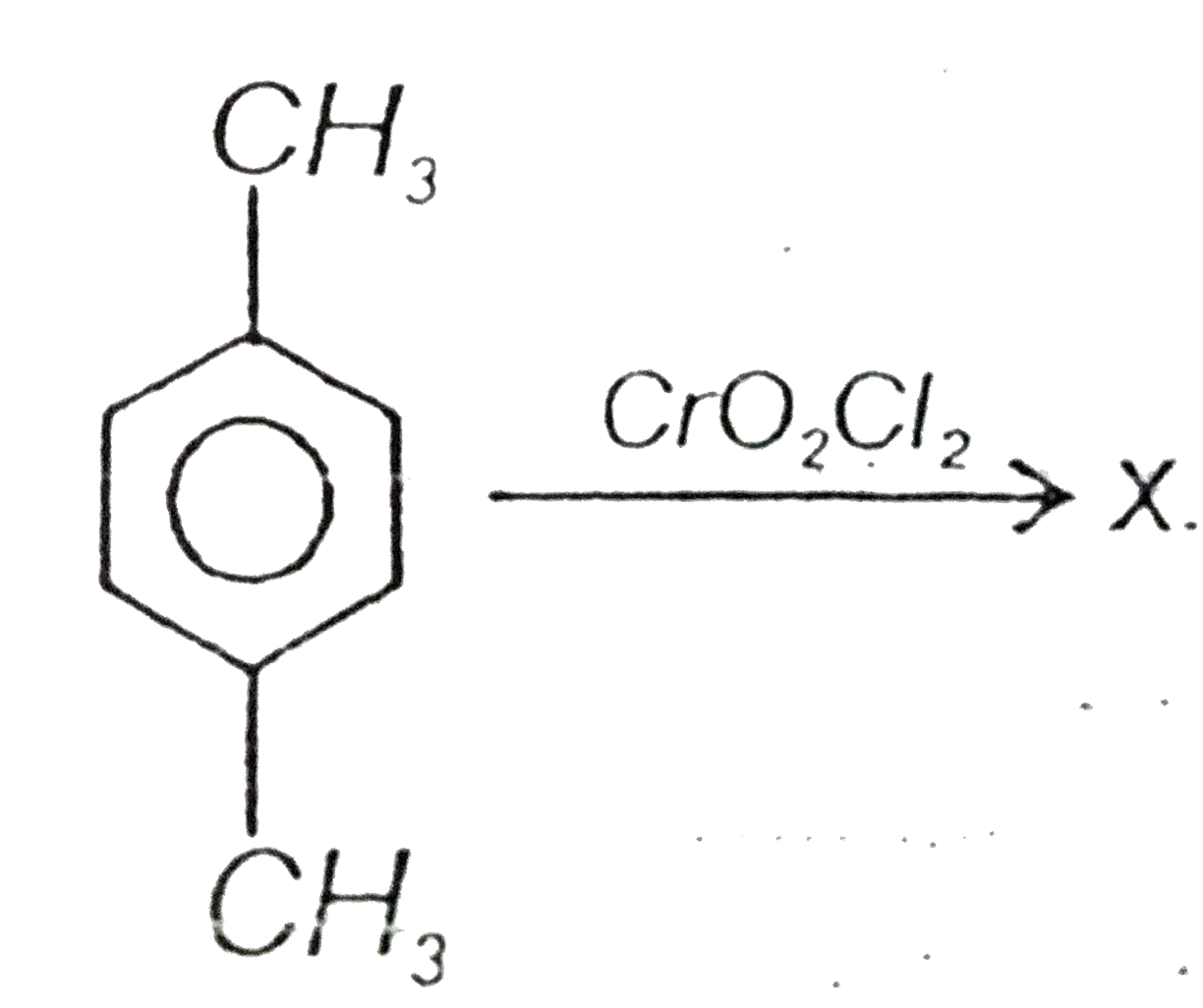Phenol +CH2OAlkali−−→A , Here, [A] is :
O & p- Hydroxy benzyl alcohol
m - Hydroxy Benzaldehyde
Aniline
None of these
The correct Answer is:A
To solve the question regarding the reaction of phenol with formaldehyde (CH₂O) in the presence of an alkali, we can follow these steps:
1. Identify the Reactants:
- The reactants in this reaction are phenol (C₆H₅OH) and formaldehyde (CH₂O).
2. Understand the Role of Alkali:
- The alkali acts as a base and facilitates the deprotonation of phenol, converting it into phenoxide ion (C₆H₅O⁻). This ion is more reactive towards electrophiles due to the increased electron density on the aromatic ring.
3. Formation of Phenoxide Ion:
- When phenol reacts with alkali, it loses a proton (H⁺) and forms the phenoxide ion:
C₆H₅OH+OH⁻→C₆H₅O⁻+H₂O
4. Electrophilic Attack:
- The phenoxide ion is an ortho- and para-directing species. The formaldehyde acts as an electrophile and can attack the aromatic ring at either the ortho or para position relative to the hydroxyl group.
5. Formation of the Product:
- The electrophilic substitution leads to the formation of two possible products:
- Ortho-hydroxybenzyl alcohol (when formaldehyde attacks the ortho position).
- Para-hydroxybenzyl alcohol (when formaldehyde attacks the para position).
- The general structure of the product can be represented as:
C₆H₄(OH)(CH₂OH)
6. Conclusion:
- The product A, formed from the reaction of phenol and formaldehyde in the presence of alkali, is either ortho-hydroxybenzyl alcohol or para-hydroxybenzyl alcohol. However, the question asks for (A), which refers to the general product formed in this reaction.
Final Answer:
- (A) is ortho-hydroxybenzyl alcohol (or para-hydroxybenzyl alcohol).
- The reactants in this reaction are phenol (C₆H₅OH) and formaldehyde (CH₂O).
- The alkali acts as a base and facilitates the deprotonation of phenol, converting it into phenoxide ion (C₆H₅O⁻). This ion is more reactive towards electrophiles due to the increased electron density on the aromatic ring.
- When phenol reacts with alkali, it loses a proton (H⁺) and forms the phenoxide ion:
C₆H₅OH+OH⁻→C₆H₅O⁻+H₂O
- The phenoxide ion is an ortho- and para-directing species. The formaldehyde acts as an electrophile and can attack the aromatic ring at either the ortho or para position relative to the hydroxyl group.
- The electrophilic substitution leads to the formation of two possible products:
- Ortho-hydroxybenzyl alcohol (when formaldehyde attacks the ortho position).
- Para-hydroxybenzyl alcohol (when formaldehyde attacks the para position).
- The general structure of the product can be represented as:
C₆H₄(OH)(CH₂OH)
- The product A, formed from the reaction of phenol and formaldehyde in the presence of alkali, is either ortho-hydroxybenzyl alcohol or para-hydroxybenzyl alcohol. However, the question asks for (A), which refers to the general product formed in this reaction.
- (A) is ortho-hydroxybenzyl alcohol (or para-hydroxybenzyl alcohol).
Topper's Solved these Questions
- ALCOHOLS, PHENOLS & ETHERSBOOK - VMC MODULES ENGLISHCHAPTER - ALCOHOLS, PHENOLS & ETHERSEXERCISE - Enable
100 Videos
- ALCOHOLS, PHENOLS & ETHERSBOOK - VMC MODULES ENGLISHCHAPTER - ALCOHOLS, PHENOLS & ETHERSEXERCISE - Efficient
98 Videos
- ALCOHOLS, PHENOLS & ETHERS BOOK - VMC MODULES ENGLISHCHAPTER - ALCOHOLS, PHENOLS & ETHERS EXERCISE - IN-CHAPTER EXERCISE - L
10 Videos
- ALDEHYDES,KETONES & CARBOXYLIC ACIDS BOOK - VMC MODULES ENGLISHCHAPTER - ALDEHYDES,KETONES & CARBOXYLIC ACIDS EXERCISE - IN-CHAPTER EXERCISE-M
10 Videos
Similar Questions
Knowledge Check
CH3CH2−O∣∣C−CH3NaNO2−−−−→HCl, Major product of this reaction is :
ACH3C∣NOH−O∣∣C−CH3BCH3−CH2−O∣∣C−CH=N−OHC D
D
Ph−CH2−CH2CH3∣⊕N∣CH2CH2CH3−CH3ΘOH−−→Δ
AH2C=CH2BPh−CH=CH2CH3C−CH=CH2DPh−CH3∣C=CH2
Acetone CH3MgI−−−−−→Dry ether intermediate H2O−−→ 'X' . Here, [X] is :
View SolutionComplete the following reactions:
(i) CH3−CH3∣C∣Cl−CH2CH3alcKOH−−−−→ΔAO3−−−−−→Zn/H2O(B+C)
(ii) CH3ICH−CH3alcKCN−−−−→A(i)SnCl2/HCl−−−−−−−−−−−−→(ii)H2O.OH.H2O2B
(iii) HCNHCl/AlCl3−−−−−−→A(i)C6H6Δ−−−−−−−−−−→(ii)(H2O)/H−B
(iv)
View SolutionR−O∣∣C−OH[?]−−→RCH2−OH
Here reagent is
View SolutionIn the reaction
PhenolNaOH−−−→(A)CO2+HCl−−−−−−→140(B) here B is
View SolutionMonomer of ⎡⎢ ⎢⎣NH−(CH2)5−O∣∣S⎤⎥ ⎥⎦n is
View SolutionCH3−CH2−O−CH2−CH3+O2hv−−→ (A) The product (A) is:
View Solution
